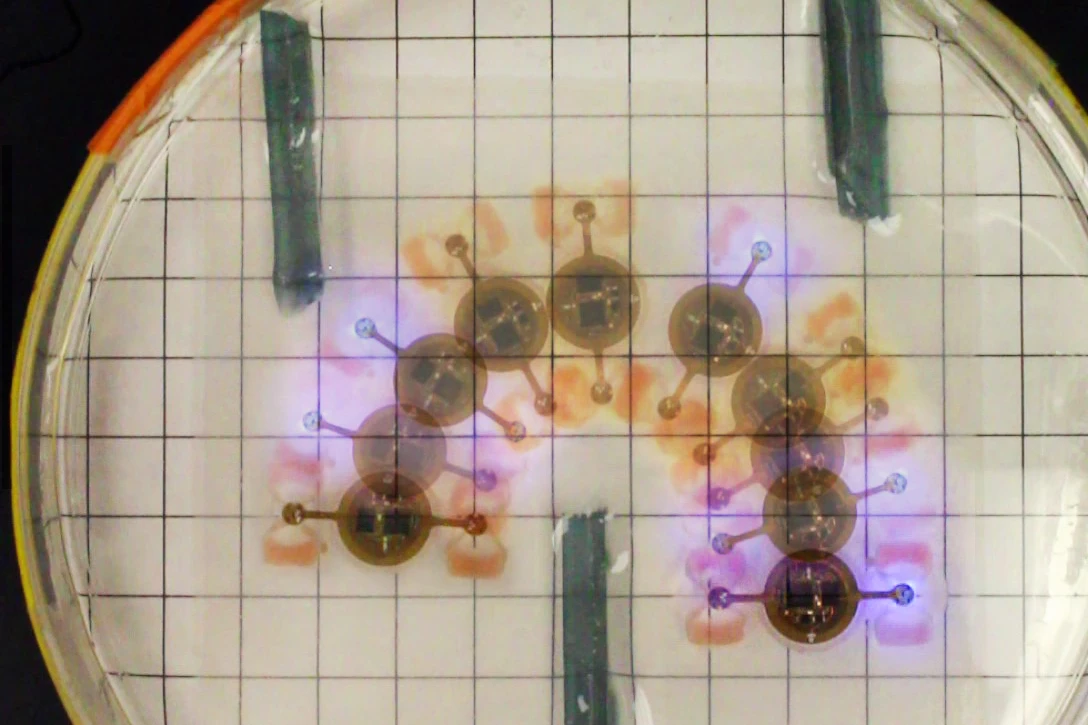Back in 2012, we heard about tiny biped "biobot" robots that used actual muscle tissue to walk. Well, the descendants of those bots are now equipped with LEDs, which allow them to be remotely steered in a practical fashion.
Developed by scientists at the University of Illinois, the original biobots were less than a centimeter long. Each one had a 3D-printed soft hydrogel body, consisting of a horizontal spine attached to two vertical legs.
While those first models incorporated heart tissue within the spine, the next version utilized a piece of mouse spinal muscle tissue. When exposed to an external pulsating electrical field, that tissue (and thus the spine) would repeatedly contract, causing the legs to alternately step forward as it did so. This allowed the biobots to walk, although only in a straight(ish) line.
That changed in 2016, with a third version in which a ring of bioengineered light-sensitive mouse muscle tissue was added. By precisely aiming an external blue light source at one side of the biobot or the other, it was possible to cause the tissue to contract on that side only. In this way, the robot could be made to turn left or right. That said, the approach was a bit impractical, as it required the bot to stay in places where the light could reach it.
The latest version of the technology, called the eBiobot, changes things up yet again.
Instead of legs, it has two hydrogel/muscle-tissue actuators, each one of which is equipped with a microLED. Between those actuators is an electronics module that includes a receiver coil. In response to an externally applied radio signal, that coil powers up the LEDs, causing them to pulse. This light source in turn causes the muscle tissue to repeatedly contract, shuffling the actuator forward.
By modulating the signal, however, it's possible to illuminate both LEDs at once or either one individually. In this way, the eBiobot can be made to move forward or to turn left or right – without having to be illuminated by an external light source.

"Integrating microelectronics allows the merger of the biological world and the electronics world, both with many advantages of their own, to now produce these electronic biobots and machines that could be useful for many medical, sensing and environmental applications in the future," said Prof. Rashid Bashir, who led the study along with Northwestern University's Prof. John A. Rogers.
A paper on the research was recently published in the journal Science Robotics. You can see the eBiobots in action, in the video below.
Source: University of Illinois




